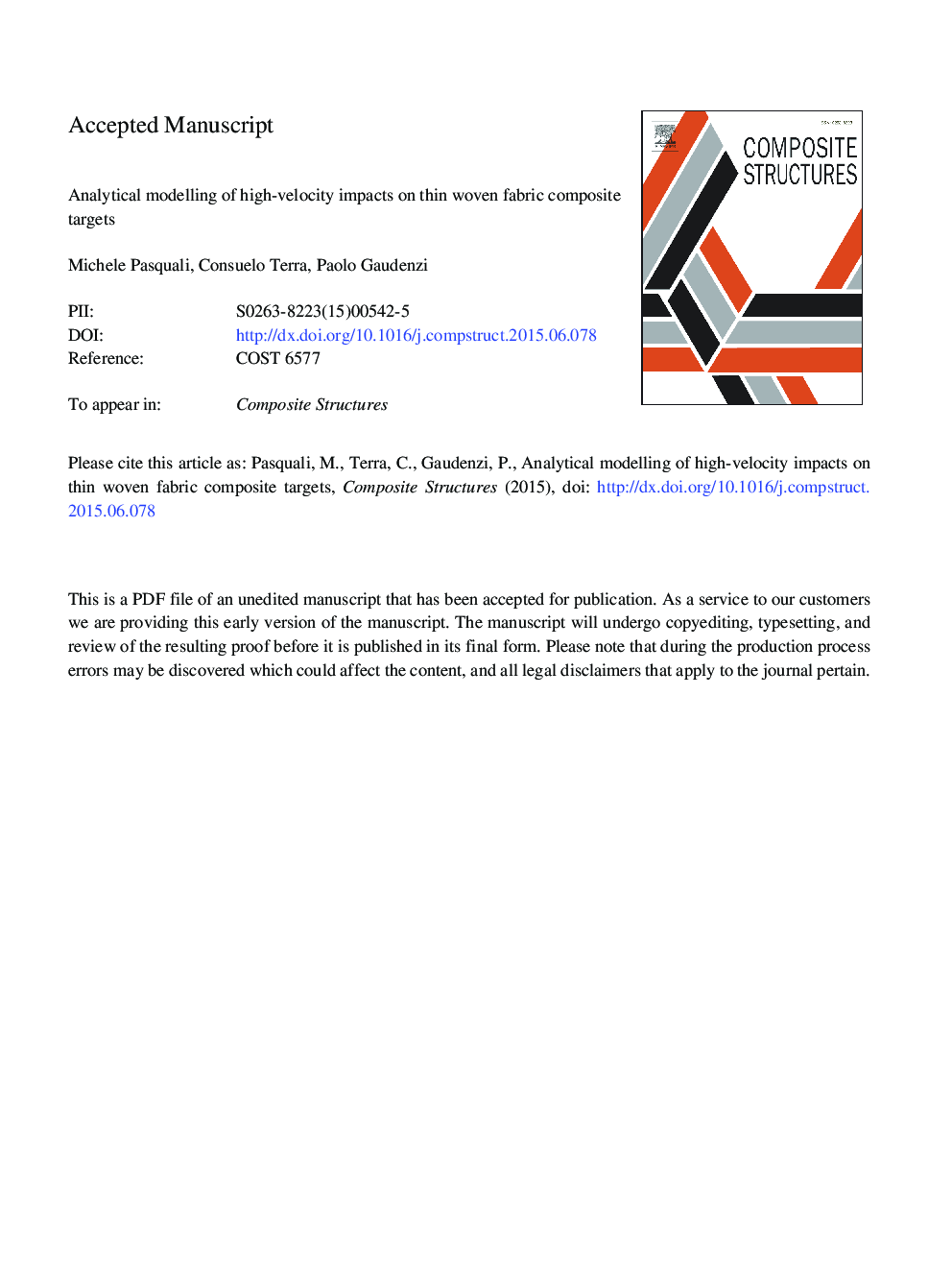| Article ID | Journal | Published Year | Pages | File Type |
|---|---|---|---|---|
| 6706803 | Composite Structures | 2015 | 37 Pages |
Abstract
Even though fiber-reinforced composites generally possess high specific stiffness and high specific strength, they can exhibit a reduced ability to absorb impact energy. When such structures are subject to high-velocity impacts (HVI), they are therefore likely to suffer complete perforation, eventually causing the dramatic failure of the overall system. In this work, an analytical formulation is proposed to simulate the response of thin composite targets undergoing different damage and energy absorbing mechanisms due to high-velocity impacts. Given their mechanical and geometric properties, the proposed approach describes the energy transfer which takes place from the projectile to the target by means of the stress wave propagation theory. During the impact, the kinetic energy of the projectile is either absorbed or dissipated by the target via various deformation/damage mechanisms. Particular attention is drawn to describe the effects associated to the shear plugging phenomena characterizing the response of thin woven fabric composite targets with high specific stiffness. The ballistic limit, the damage size and the impact duration are obtained through enforcement of the energy balance. A validation of the proposed formulation is achieved through an extensive experimental campaign and a comparison with literature results. Good correlation between numerical predictions and literature and experimental results is observed.
Related Topics
Physical Sciences and Engineering
Engineering
Civil and Structural Engineering
Authors
Michele Pasquali, Consuelo Terra, Paolo Gaudenzi,
